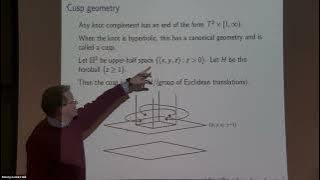Computer graphics algorithms | Mesh generation
Marching tetrahedra
Marching tetrahedra is an algorithm in the field of computer graphics to render implicit surfaces. It clarifies a minor ambiguity problem of the marching cubes algorithm with some cube configurations. It was originally introduced in 1991. While the original marching cubes algorithm was protected by a software patent, marching tetrahedrons offered an alternative algorithm that did not require a patent license. More than 20 years have passed from the patent filing date (June 5, 1985), and the marching cubes algorithm can now be used freely. Optionally, the minor improvements of marching tetrahedrons may be used to correct the aforementioned ambiguity in some configurations. In marching tetrahedra, each cube is split into six irregular tetrahedra by cutting the cube in half three times, cutting diagonally through each of the three pairs of opposing faces. In this way, the tetrahedra all share one of the main diagonals of the cube. Instead of the twelve edges of the cube, we now have nineteen edges: the original twelve, six face diagonals, and the main diagonal. Just like in marching cubes, the intersections of these edges with the isosurface are approximated by linearly interpolating the values at the grid points. Adjacent cubes share all edges in the connecting face, including the same diagonal. This is an important property to prevent cracks in the rendered surface, because interpolation of the two distinct diagonals of a face usually gives slightly different intersection points. An added benefit is that up to five computed intersection points can be reused when handling the neighbor cube. This includes the computed surface normals and other graphics attributes at the intersection points. Each tetrahedron has sixteen possible configurations, falling into three classes: no intersection, intersection in one triangle and intersection in two (adjacent) triangles. It is straightforward to enumerate all sixteen configurations and map them to vertex index lists defining the appropriate triangle strips. (Wikipedia).



















